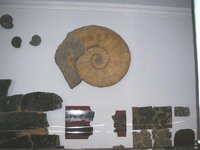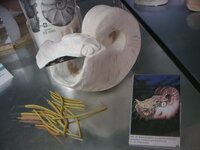- Joined
- Nov 19, 2002
- Messages
- 3,031
Sordes has very kindly sent me some stunning images of what must surely be the greatest collection of fossil cephalopods on public display anywhere in the world. They were all taken at the Palaeontological Institute at the University of Tubingen in Germany.
http://www.uni-tuebingen.de/geo/gpi/sammlung/museum/pal.html
Thanks Markus! As the originals were quite dark I've lightened most of them and cropped a few, hope that's OK. Enjoy!
Ammonites
http://www.uni-tuebingen.de/geo/gpi/sammlung/museum/pal.html
Thanks Markus! As the originals were quite dark I've lightened most of them and cropped a few, hope that's OK. Enjoy!
Ammonites















 Glad I'm not a female belemnite...
Glad I'm not a female belemnite...